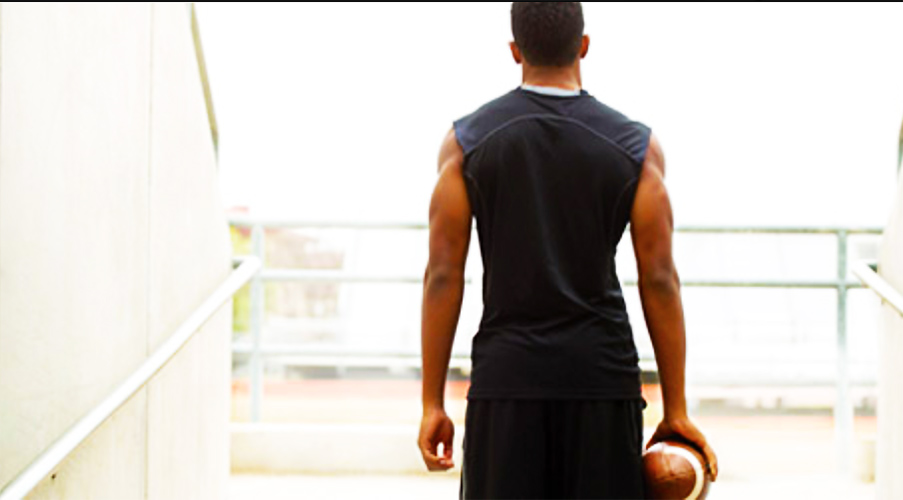Since college sports were halted by the COVID-19 pandemic in March, most respondents in an NCAA student-athlete well-being survey reported experiencing high rates of mental distress. The survey, which was open from April 10 to May 1 had responses from more than 37,000 student-athletes, which also showed 82 percent of respondents reported feeling positive or very positive about the support they are receiving from their coaches.
Still, the unprecedented times have caused stress and anxiety.
Over a third of respondents reported experiencing sleep difficulties, while more than a quarter reported feeling sadness and a sense of loss, and 1-in-10 reported feeling so depressed it has been difficult to function “constantly” or “most every day.”
Mental health concerns were highest among respondents of color, those whose families are facing economic hardship and those living alone. Additionally, college seniors reported a sense of loss at 1.5 times the rate of underclassmen. In most instances, the rates of mental health concerns were 150 percent to 250 percent higher than that historically reported by NCAA student-athletes in the American College Health Association’s National College Health Assessment.
Communication during the pandemic has been key to supporting student-athletes’ mental and physical well-being.
In open-ended questions, student-athletes were asked to share what coaches and athletic departments were doing well to provide support. Responses included maintaining team connections through coach-hosted online meetings, providing training workouts on a regular basis, sending out motivational messages via social media, hosting town halls for all student-athletes, and providing one-on-one check-ins regarding academics and mental well-being.
Academics
- 99 percent of respondents said their coursework had shifted online.
- 70+ percent of participants indicated feeling positive about their ability to pass their spring courses, with a quarter feeling somewhat positive or somewhat negative and less than 5 percent feeling negative.
- Fewer student-athlete respondents indicated feeling positive about their ability to keep up with classes (51 percent).
- In the open-ended comment section, some student-athletes indicated they were struggling with the online format, some shared that faculty had increased their assignment load as a result of moving online, and others reported struggling to connect with faculty, learning specialists or tutors when they had questions about course material.
Living environment
- Approximately 80 percent of student-athletes said they were living away from campus and with parents, family, or a significant other. Nine percent were living with teammates or other friends, 4 percent were living alone and 3 percent remained in campus housing.
- Nine out of 10 student-athletes reported being in a stable housing situation and having access to enough food to meet their daily needs.
- 80 percent reported knowing how to access a medical provider for physical health needs, 60 percent of men and 55 percent of women said they know how to access mental health support in their area.
- Racial disparities were reported in housing and food stability and access to medical care, with white student-athletes indicating higher levels of agreement on all items as compared with participants of color.
- 75 percent of black male student-athletes compared with 92 percent of white males, said they have access to enough food, and 61 percent reported that healthy food options are readily available to them, as compared with 81 percent of white male participants.
Other Findings
- Of the athletes surveyed, 4-in-5 cited local regulations and a lack of access to appropriate facilities as barriers to their athletics training.
- Black and Latino student-athletes were more likely to agree that fear of exposure to COVID-19 is a barrier to training (50 percent and 53 percent, respectively) than white student-athletes (41 percent). Black and Latino participants were more likely to cite family or personal responsibilities as a barrier to training (both 40 percent), as compared with white student-athletes (27 percent) and those in other racial categories (34 percent).
- Student-athletes showed a strong interest in receiving a range of educational resources during the pandemic.
- In terms of resources specific to their training and physical well-being, respondents generally look to coaches as their primary source of information. They also would turn to coaches to help maintain social connections.
- Many reported they would look to their athletics department for academic support, career planning and financial assistance resources.
- While most seem to be interested in local, institution-specific resources, respondents were most likely to seek resources from the NCAA national office about information on COVID-19 and updates specific to their sport.
The survey was conducted by NCAA research in collaboration with the NCAA Sport Science Institute and the national Division I, II and III Student-Athlete Advisory Committees. Results are informing national office programming during spring and summer 2020 and being shared with NCAA governance committees, conference offices and athletics departments. The executive summary and detailed results can be found here.
















